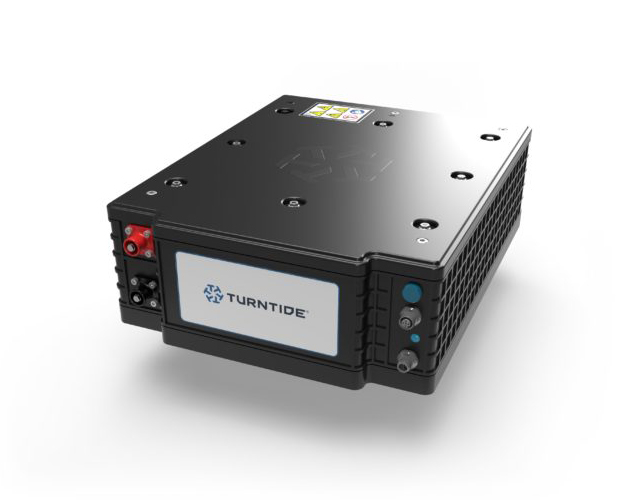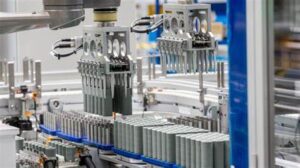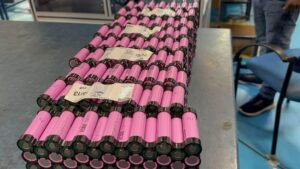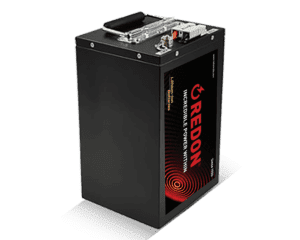Lithium-ion batteries are the most versatile, efficient, and reliable energy storage solutions available today on the market. These batteries have a high energy density, allowing them to store a lot of energy in a compact size. This is why they are used in a wide range of applications, including electric vehicles and renewable energy storage – even laptops and smartphones!
In spite of the fact that there are many different types of lithium-ion batteries available, Lithium Iron Phosphate (LFP) and Lithium Nickel Manganese Cobalt Oxide (NMC) are the most popular types. Especially when it comes to electric vehicles and renewable energy storage.
Despite their similar chemical compositions, their manufacturing processes, performance characteristics, and suitability for different applications make them distinct. While they share many properties, their unique characteristics allow them to serve various purposes.
In this blog, we will explore the differences between an LFP battery pack and an NMC battery pack.
Understanding LFP and NMC Chemistry
Understanding the fundamental differences between LFP and NMC chemistry is crucial before discussing manufacturing disparities:
Lithium Iron Phosphate (LFP): The LFP chemistry uses an iron-phosphate cathode that is known for its durability, safety, and thermal stability. As a result, it is ideal for stationary energy storage systems that prioritize reliability and durability, as it generally has a lower energy density but excels in cycle life and safety.
Lithium Nickel Manganese Cobalt Oxide (NMC): Compared to LFP, the NMC chemistry incorporates nickel, manganese, and cobalt into its cathode structure, providing a higher energy density. However, NMC batteries offer greater energy density than LFP batteries despite sacrificing some cycle life. Electric vehicles, for example, need high power and energy density, making them a good choice.
Manufacturing an LFP Battery Pack

There are several key steps involved in making an LFP battery pack tailored to its unique properties:
- Cathode Material Preparation: Several chemical processes, including iron, phosphate, and other additives, are involved in the synthesis of LFP cathode material. Battery performance and durability are heavily dependent on the cathode material’s composition and morphology.
- Electrode Coating: In order to create a cathode electrode, aluminum foil is coated on the LFP cathode material. Coating thickness and uniformity must be precisely controlled to achieve the most optimal electrochemical performance.
- Cell Assembly: The coated cathode, along with an anode, separator, and electrolyte, is assembled into individual cells. LFP cells typically exhibit a lower energy density but offer enhanced safety and longevity.
- Module and Pack Assembly: Individual cells are assembled into modules, and multiple modules are integrated into a complete battery pack. Thermal management systems, electronics, and safety features ensure reliable operation under various conditions.
Manufacturing an NMC Battery Pack

The manufacturing process for NMC battery packs shares similarities with LFP packs but considers NMC chemistry-specific characteristics:
- Cathode Material Synthesis: NMC cathode material is synthesized through a series of chemical reactions involving nickel, manganese, cobalt, and other additives. The precise composition and particle morphology play a crucial role in battery performance.
- Electrode Coating: Similar to LFP, the NMC cathode material is coated with aluminum foil to form the cathode electrode. NMC electrodes typically exhibit higher energy density but lower thermal stability than LFP.
- Cell Assembly: NMC cells are assembled using a coated cathode, anode, separator, and electrolyte. NMC batteries offer high energy density, making them suitable for applications requiring compact and lightweight design.
- Module and Pack Assembly: As with LFP packs, NMC cells are assembled into modules, and multiple modules are integrated into a complete battery pack. Thermal management and safety systems are essential to mitigate risks associated with higher energy density.
Key Differences and Considerations
Both LFP and NMC battery packs play a crucial role in the transition to electrification and renewable energy, but each has distinct advantages and disadvantages:
Safety vs. Energy Density: LFP prioritizes safety and longevity, making it ideal for stationary energy storage and applications where safety is paramount. NMC offers higher energy density but lower thermal stability, making it suitable for high-power applications such as electric vehicles.
Cycle Life vs. Energy Density: LFP batteries typically boast longer cycle life and greater resilience to high temperatures, making them suitable for applications requiring prolonged lifespan and reliability. NMC batteries offer higher energy density but may require more stringent thermal management to maintain performance and safety.
Cost vs. Performance: LFP batteries tend to have lower manufacturing costs due to the abundance and affordability of iron compared to nickel, manganese, and cobalt used in NMC chemistry. However, NMC batteries offer superior energy density, which may justify higher manufacturing costs for specific applications.
Conclusion
In the realm of lithium-ion battery technology, the choice between LFP and NMC chemistry involves careful consideration of performance requirements, safety concerns, and cost considerations. While LFP prioritizes safety, longevity, and cost-effectiveness, NMC offers higher energy density and power output at the expense of cycle life and potentially higher manufacturing costs.
Ultimately, the choice between LFP and NMC chemistry will depend on the specific application. For applications where safety is paramount, LFP may be a better choice. For applications that require high energy density and power output, NMC may be the better choice.




